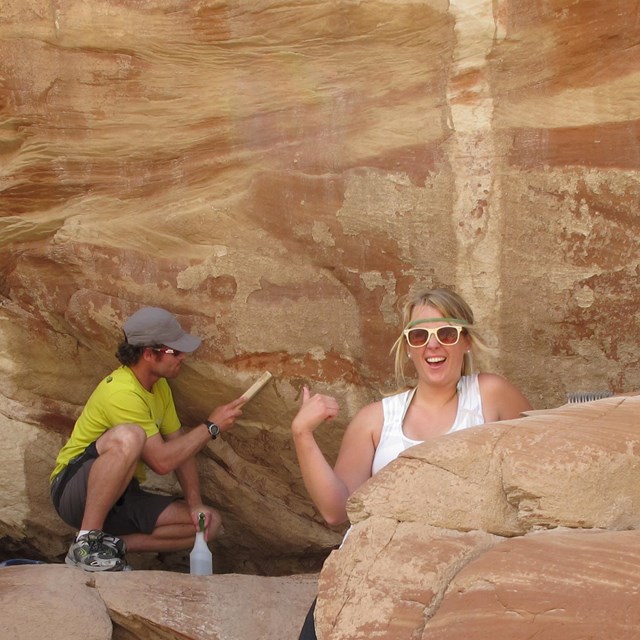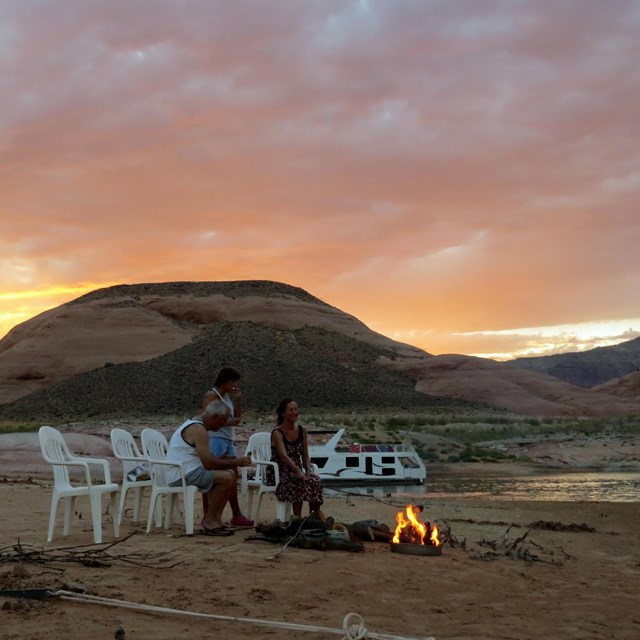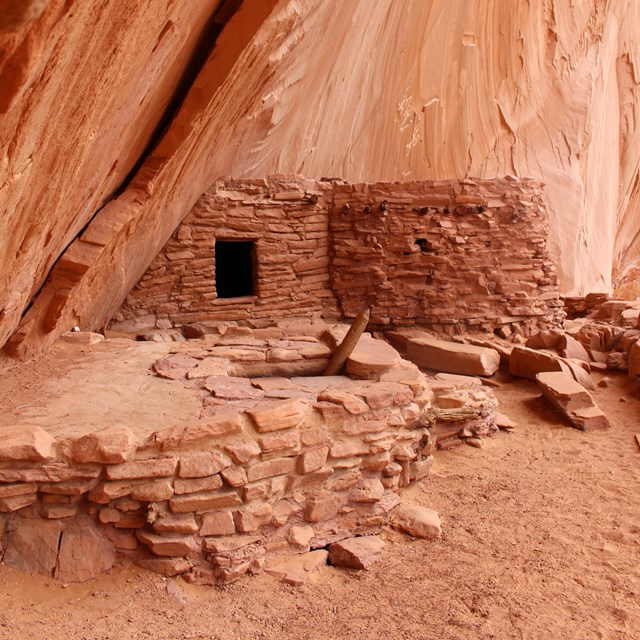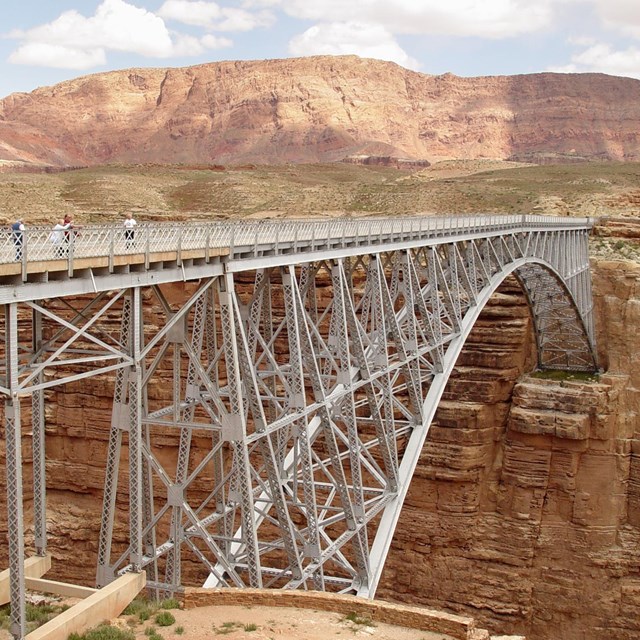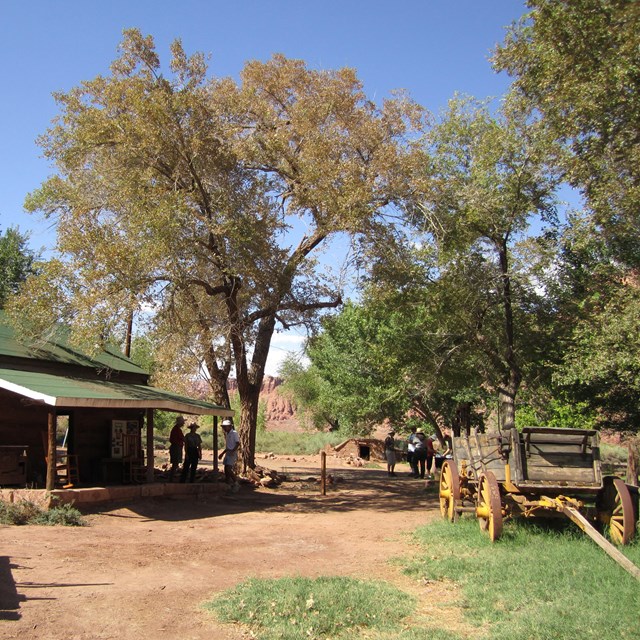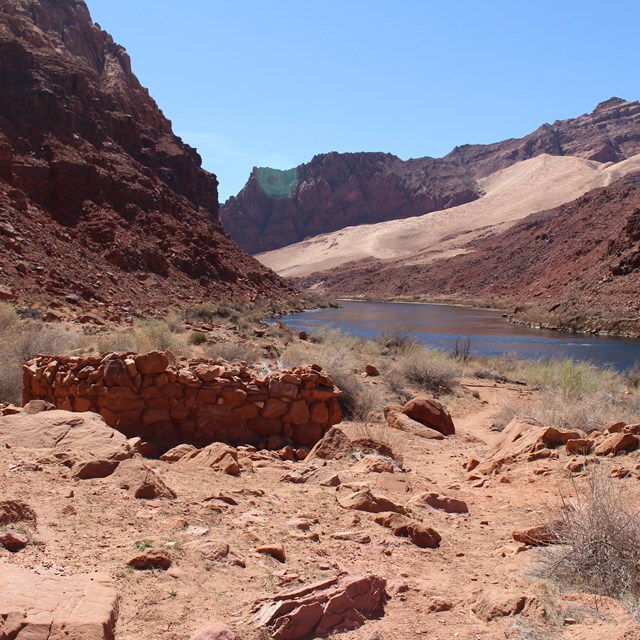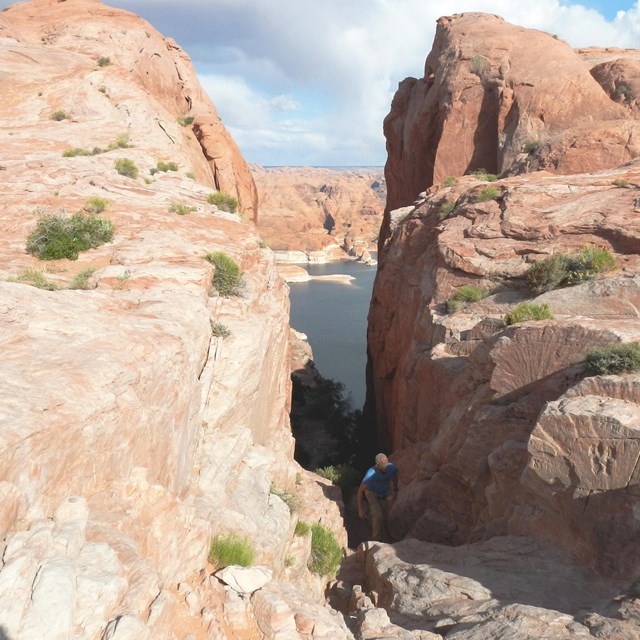
NPS 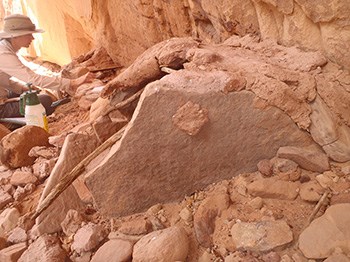
NPS Preservation In Action
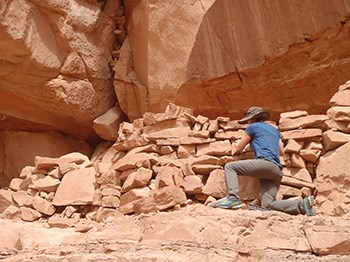
NPS Recently, archeologists completed stabilization activities on archeological structures in the backcountry. Only a handful of archeological sites in the park are actively stabilized and preserved. These are usually sites that are in excellent condition and representative of unique prehistoric architecture. Most often the type of prehistoric structures that archeologists stabilize in Glen Canyon NRA are either constructed of dry stacked masonry or mortared masonry. “Dry Stacked” means that no mortar was used in the original construction and these structures depend on large structural stones being stacked carefully to create upright stable walls. These structures can last for hundreds or even thousands of years without falling over. However, sometimes as these structures age, and are exposed to the elements, the structural stones begin to erode and crack, weakening the walls. One way preservation archeologists fix this issue is by placing chinking or shimming stones carefully to support the structural stones. This is a small change to the structure that gives support where needed, reducing the likelihood of wall collapse, allowing the structure to remain intact longer than it would otherwise, without changing the overall look and feel of its original state. 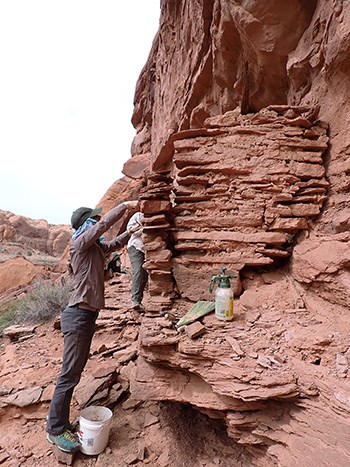
NPS / Lauren Compton Masonry that uses mortar to “glue” the wall stones together also sometimes need to be stabilized. After many years of exposure to the elements, the prehistoric earth-based mortars inevitably erode, weakening the walls. In cases where the mortar is in such bad shape that the whole structure is in danger of collapsing, archeologists sometimes must add new mortar to the structure. Preservation archeologists make new mortar, sometimes adding a strengthening element, to cover and protect prehistoric mortar or to fill in gaps in the walls. Archeologists carefully document everything they add or change to a structure so that it can be reversed if needed. 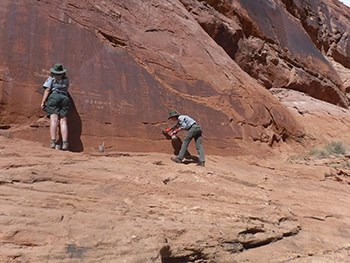
NPS Graffiti at petroglyph sites is one of the most common, ongoing cause of damage to heritage sites at Glen Canyon National Recreation Area. Archeologists work hard to monitor and document all damage that is done to sites such as scratching, rubbing, and carvings added by modern visitors. This type of vandalism can never be repaired unfortunately, so the park works to educate visitors about visiting these sites with respect. Conservation work can sometimes hide modern vandalism on rock glyph sites, however it can never be completely fixed or hidden. Sometimes the park seeks volunteers to help remove graffiti like this from the park. Join the Graffiti Removal & Intervention Team! 
NPS Glen Canyon NRA is the steward of many historic properties listed on the National Register of Historic Places, including the Lee’s Ferry/Lonely Dell Ranch National Historic District. Archeologists work hard all year round to maintain and upkeep the historic buildings here. A recent ongoing project has been to repair and stabilize the 1930’s era Weaver Ranch House at Lonely Dell. Archaeologists have worked with expert masons, carpenters, and architects to do internal and external repairs to the house. One recent project focused on repairing the external mortar between the building stones. This process involved manually removing old eroded and damaged mortar and replacing it with new. Staff developed a mix of cement, lime, gravel, and sand to get the coloring and hardness of the new mortar just right. The goal in historic structure preservation is to use new materials that are compatible with the historical construction techniques. 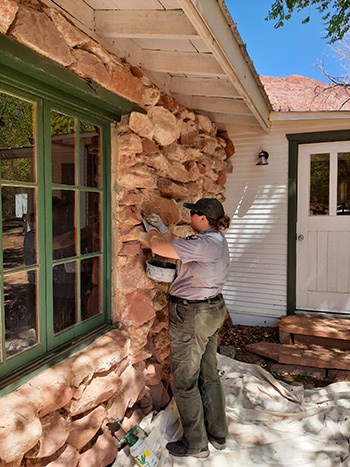
NPS / Amy Schott Preserve Your HeritageGlen Canyon National Recreation Area preserves a record of more than 10,000 years of human presence, adaptation, and exploration. This place remains significant for many descendant communities, providing opportunities for people to connect with cultural values and associations that are both ancient and contemporary. Your history may lie within this park. You may find it etched onto walls or perched on the edge of a cliff. It may be a wagon at Lees Ferry, a pioneer rancher's house, a Spanish inscription, or a Native American pueblo. It may even be the rocks, the plants, the water itself. Without a strong connection to its heritage, a society can have no clear direction. Heritage is the story of a society's journey through time. The heritage of many people is embedded into this landscape and is in danger of being lost. 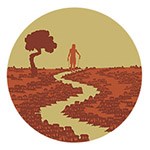
Leave No TraceMake every attempt to leave Glen Canyon nicer than you found it. “Take only pictures and leave only footprints” is a good reminder. Do not remove anything from the area. Leave the flowers, rocks and everything else for others to enjoy. Carry all of your trash out of the canyon, including toilet paper and other hygiene items. Do not burn or bury it. What can I do to help?
Preserving Special Places
Antelope Canyon Graffiti Removal 

Left image
Right image
Archeological structures and petroglyphs are very old and are fragile. Please do not sit, lean, or stand on walls of archeological structures. Only enter historic buildings or archeological sites where allowed and always use approved trails, doorways, or ladders. Do not touch or deface rock art or carve graffiti into the rock. It can never be repaired. Learn more |
Last updated: April 17, 2025


